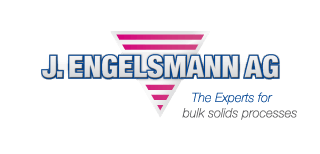Screening machines for protective screening
With protective screening, particles that should not reach downstream systems or processes are sifted off. These particles are usually foreign objects such as plastic remnants or metal parts. As such, protective screening plays a key role in quality assurance and can be introduced into the production process at various different points.
Bulk solids
The JEL TWS is primarily used for protective screening with silo filling and tanker emptying. To do this, the screening machine is simply integrated into the conveyor line between the tanker and silo.
» Further information
Bulk solids
Thanks to its low height, the JEL Fix is often integrated into existing systems for protective screening. It can either be built on a frame or integrated directly into the system (e.g. a big bag emptying station) without a frame.
» Further information
Bulk solids
As a protective screening machine with a coarse material outlet, the JEL Konti wins over users with its simple handling and quick screen change. A hygienic design option is also available and can be used for tasks with high hygiene requirements.
» Further information
Bulk solids
As a protective screening machine, the JEL VibRS can screen material using up to five screening decks at the same time – without needing any extra floor space.
» Further information
Bulk solids
The JEL EasyVib is ideal for protective screening tasks where efficient machine use is the top priority.
» Further information
Bulk solids
Thanks to the hinged cover, the screening trough and screen inserts on the JEL VibSpeed can be accessed easily.
» Further information
Bulk solids
The JEL Freischwinger is primarily used for the protective screening of large quantities or delicate products.
» Further information
Bulk solids
Thanks to its cartridge design, the JEL Phoenix can perform multiple screening tasks at the same time. This means that a product can first go through a protective screening and then subsequently be graded into multiple fractions.
» Further information
Protective screening machines are used to free bulk goods from damaging contaminants and impurities. This can involve, for example, small amounts of plastic residue or even metal parts like screws, which accidentally make it into the product and contaminate it. To ensure a consistently high final product quality, these impurities absolutely must be removed before they are packaged for sale. It isn’t just in the final product that some impurities can cause great damage, but also in the production process itself. Metal parts in particular can damage the sensitive machinery and result in expensive repairs or production downtime. Protective screening therefore has two functions in particular: they protect the production process and guarantee that the final product has a consistently flawless quality.
Protective screening is always used if the safety of the production process or the quality of a product could be endangered by an impurity. Protective screens can therefore theoretically be used at every stage of the process, but there are some typical applications:
For the delivery of raw materials and before product storage
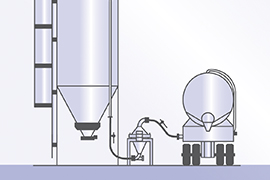 Many businesses have their bulk goods delivered by tanker or silo vehicle. So, while the product is being emptied and, for example, put in temporary storage in silos, screens on the tanker can be used for protective screening. These can easily be installed in the vehicle’s conveyor pipe and ensure that contaminants and impurities don’t make it as far as the silos, let alone the production process. Protective screening makes sense at this stage if the product is to be placed in interim storage for a long time so that no biological impurities can spread, for example.
Many businesses have their bulk goods delivered by tanker or silo vehicle. So, while the product is being emptied and, for example, put in temporary storage in silos, screens on the tanker can be used for protective screening. These can easily be installed in the vehicle’s conveyor pipe and ensure that contaminants and impurities don’t make it as far as the silos, let alone the production process. Protective screening makes sense at this stage if the product is to be placed in interim storage for a long time so that no biological impurities can spread, for example.
Before the use of raw materials in the production process
Screens placed at this stage serve as protection for the downstream production machinery. They also contribute to a consistent product quality, as many bulk goods cease to be easy to process if they are not of an adequate quality. In this case, protective screening frequently occurs directly after discharge from the silo. As many bulk materials are prone to agglomeration if stored for a long time, protective screening makes sense even if the product was already screened before storage. The agglomerates created are separated by a protective screen after discharge from the silo, and light clumps are even dissolved by the screening.
Often, the raw materials aren’t placed in interim storage but removed immediately from their transport containers, e.g. Big Bags, and fed straight into the production process. In these cases, Engelsmann protective screens can even be integrated directly into the emptying station. This saves valuable installation surface area.
Before packaging the merchandise
It should be ensured that the product is free of all unwanted elements at the latest before the product is packaged or bottled for sale or internal processing. Undetected left-over impurities have a direct effect on the quality of the final product and can, at worst, entail complaints or product recalls.
Reliability
As protective screens are usually permanently integrated into the production process, a defective machine can quickly lead to stoppages in production. If a protective screen is used as the “last line of defense” before packaging, production will, at worst, come to a standstill when the protective screening machine breaks down as the quality of the final product can no longer be guaranteed. Engelsmann therefore relies on long lasting machines of a solid construction (made from stainless steel as standard). To avoid downtime, we also emphasize low maintenance constructions with few parts subject to wear.
Throughput performance
If protective screening is implemented before the material feed in the production process, the productivity of the downstream processes depends greatly on what level of throughput the screen attains. If the screen does not achieve the required throughput performance, not enough material will be available for production. The throughput performance of a protective screening machine must be precisely coordinated with the production process so that the right quantity is available at the right time. At businesses where large quantities of bulk goods are processed, protective screens with high throughput performance are often in demand. Therefore, Engelsmann offers various models of protective screens with different throughput performance levels.
Continuous and discontinuous protective screening process
At Engelsmann you have the choice between continuous and discontinuous protective screening. Discontinuous protective screens only have a product outlet, which means the contaminants and impurities just remain on the screen cloth and must be removed by hand. Continuous protective screens, however, are equipped with a separate outlet, through which the separated coarse materials will be directed. So, the protective screening process can run without interruptions to check and clean the screen cloth.
Integration into the process
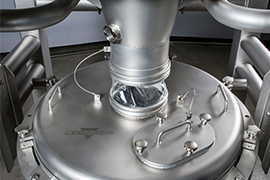 Protective screens from Engelsmann are compact despite their massive construction and are therefore capable of being easily integrated retrospectively into existing systems and processes. Alternatively, our protective screens can be directly integrated into individual system components. This makes sense at Big Bag emptying stations or bag-emptying boxes for manual bag emptying. As a rule, the screens are built directly into the outlet of the discharge funnel, so that emptying and protective screening can occur in one step.
Protective screens from Engelsmann are compact despite their massive construction and are therefore capable of being easily integrated retrospectively into existing systems and processes. Alternatively, our protective screens can be directly integrated into individual system components. This makes sense at Big Bag emptying stations or bag-emptying boxes for manual bag emptying. As a rule, the screens are built directly into the outlet of the discharge funnel, so that emptying and protective screening can occur in one step.
Additional features
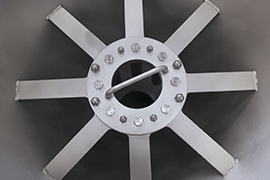 Among the most frequently used additional features for protective screens are magnetic separators. These are located below the screening cloth and consist of multiple magnetic rods. Fine metal particles that are smaller than the mesh size of the screening cloth, get caught due to the magnet. These can be removed by hand afterwards.
Among the most frequently used additional features for protective screens are magnetic separators. These are located below the screening cloth and consist of multiple magnetic rods. Fine metal particles that are smaller than the mesh size of the screening cloth, get caught due to the magnet. These can be removed by hand afterwards.
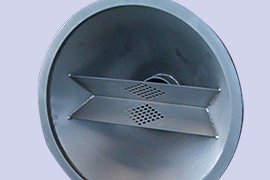 With protective screening, it’s also important that the bulk goods are spread evenly over the screening cloth to ensure that the surface of the screen is being optimally utilized. With tanker screens, which are fed from above, it may happen that a standing material column can be formed on the screen. The material distributor built into the cover divides the material flow and gently guides it onto the surface of the screen – this also preserves the screening cloth.
With protective screening, it’s also important that the bulk goods are spread evenly over the screening cloth to ensure that the surface of the screen is being optimally utilized. With tanker screens, which are fed from above, it may happen that a standing material column can be formed on the screen. The material distributor built into the cover divides the material flow and gently guides it onto the surface of the screen – this also preserves the screening cloth.

